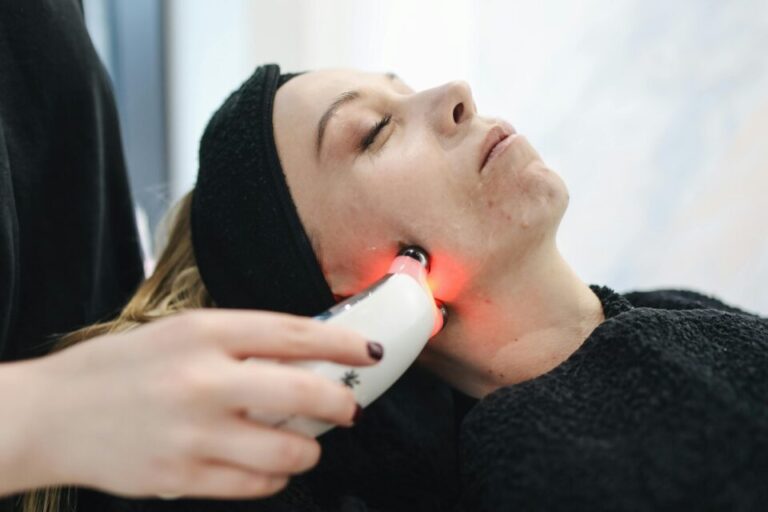Dermatologists are in-demand physicians with great earnings potential who treat thousands of skin, nail, and hair diseases. They, like most healthcare professionals, must go through rigorous training, but once they finish, they can pursue a lucrative career and specialize in a variety of fields, from pediatric care to skin cancer.
In this guide, we will explain how to study dermatology, salary, how to become a dermatologist without going to medical school, and answer frequently asked questions by our audience.
How to Study Dermatology
When you wish to become a dermatologist, there are several steps you must take before you can practice. Here are the six essential steps toward becoming a certified dermatologist.
1. Obtain your bachelor’s degree
To enroll in medical school, you must first complete a bachelor’s degree. You can choose any major you wish, but you must complete all of the required courses for medical school.
Many aspiring medical students study science; however, it is not always required for medical school. Speak with your academic advisor to determine how to proceed with your adventure. Always strive for excellent marks to improve your chances of getting into medical school.
2. Complete Medical School
Before being admitted into a competitive medical school, you must take the MCAT and achieve high grades. Make a list of your top medical schools and research them to discover which one best suits you.
The medical school application process can be complicated and time-consuming. Before you begin, prepare all of your relevant documents and conduct your school research.
3. Obtain all requirements
To become a resident dermatologist, you must complete certain qualifications regardless of where you attend school. Look up the requirements in the state where you live or want to practice. You must pass all three parts of the USMLE and obtain valid accreditation from the American Board of Dermatology.
4. Complete Your Residency
Before you become a fully licensed dermatologist, your residency program will prepare you to work in that capacity. These residences can take up to five years to complete, including two years of basic medical training, at least 12 months of internal medicine, three months of pediatrics, and other options based on your schedule. Rheumatology, infectious disorders, and oncology are among the topics covered in your basic clinical training.
Following your basic training, you will spend three years specializing in dermatology, including at least one year of general hospital training. Following that, you will spend six months delivering consultations or inpatient care.
Following residency, many students pursue additional study in sub-specialty disciplines such as cosmetic surgery, laser medicine, immunohematology, or Mohs micrographic surgery. This is accomplished by a one- to two-year fellowship.
5. Get Your License or Certification
To practice, you must keep your license current. After finishing medical school and a dermatology residency, you can take the Dermatology Board Examination conducted by the ABD to become board-certified.
Assume you have completed a fellowship and passed the general board examinations. In that situation, you can obtain further qualifications and take the Subspecialty Board Exam. You must retake and pass this exam every ten years.
How many years to become a dermatologist
Becoming a dermatologist can take up to 13 years, including undergraduate, medical school, and residency.
Dermatology school requirements
To become a dermatologist in the United States, you must have a current license. While criteria differ by state, the majority need dermatologists to have a degree from an authorized medical school, complete a residency program, and pass the United States Medical Licensing Exam. As a result, becoming a dermatologist will require you to:
- Gain a bachelor’s degree
- Pass the MCAT
- Attend medical school
- Pass the first two parts of the USMLE.
- Complete your residency
- Pass the third part of the USMLE
- Get a license
- Become board certified
How to become a dermatologist without going to medical school
Some opportunities for working in dermatology without a medical degree include:
1. Esthetician
Estheticians provide skin care procedures such as facials, chemical peels, microdermabrasions, extractions, and waxing. Estheticians must complete a training program and get a state license before practicing. Their services promote healthy skin and supplement dermatologic treatment strategies.
2. Medical Assistant
Medical assistants in dermatological settings help with administrative chores, gather patient histories, prepare patients for procedures, and perform basic skin treatments under supervision. To become a dermatology medical assistant, you must first complete a medical assisting certificate program.
3. Clinical Aesthetician
Clinical aestheticians work in medical settings and provide advanced treatments such as laser therapy, microneedling, and strong pulsed light under physician supervision. This function necessitates esthetician training as well as further certifications in the clinical practices used.
4. Cosmetic Chemist
Cosmetic chemists use their expertise in skin science and chemistry to create skincare products. This position requires a chemistry degree or a scientific background. Cosmetic chemists investigate chemicals, create products, and evaluate for safety and efficacy.
Medical Equipment Sales
Medical device sales agents market and sell dermatology-related devices and technologies, such as lasers and aesthetic goods, to physician offices and medical spas. They must grasp the benefits of the product and how technology works to educate potential customers.
5. Obtain Relevant Training and Certification
While many jobs do not require extensive medical training, some education and qualifications are still required, such as:
- Esthetics license: Required for practicing esthetics; includes esthetician curriculum and a state board exam.
- Laser certification: This is required for legally using lasers and comprises both theoretical and practical instruction on specific laser types.
- Medical assistant certificate: This program typically lasts one year and covers medical processes, patient interface, insurance, clinical skills, and so on.
- Specialty service: This training includes extra classes for methods such as microblading, microneedling, and permanent makeup.
- Chemistry or science degree: Required for product development positions.
Proper training ensures that you have the necessary experience and certifications to provide clients with safe and effective care. When obtaining specialty certificates or licenses, always check with your state’s criteria.
6. Gain hands-on skills with experience
In addition to formal schooling, real-world experience is crucial in building your skills and working knowledge. Ways to obtain this include:
- Apprenticeships: Work under the supervision of an experienced dermatology specialist to learn skills firsthand.
- Clinic or spa positions: Gain experience as an esthetician, assistant, receptionist, or manager.
- Internships allow you to shadow professionals and learn about different dermatology jobs.
- Volunteering: Help at health fairs and clinics by providing free skin care.
- On-the-job training: Entry-level positions include training in specialized clinic techniques and technology.
- Dermatology conventions: Attend conferences and workshops to expand knowledge.
- Hands-on experience improves your technical skills and solidifies theoretical understanding. Mentorship from experienced dermatologists also provides essential wisdom.
7. Collaborate with dermatologists
When working in dermatology without a medical degree, it is critical to understand your area of practice and communicate with other dermatologists. Dermatologists are qualified medical professionals who must diagnose illnesses, administer drugs, and undertake invasive procedures.
Non-dermatology professionals can offer considerable value with services such as:
- Maintaining healthy skin in between dermatologist appointments
- Supplementary treatments to support medical care.
- Monitoring skin and reporting issues to the dermatologist.
- Patient education regarding proper skin care practices
- Using non-invasive treatments, such as lasers, under supervision
- Creating tailored homecare regimens.
- Open communication and collaboration with dermatologists ensure that patients receive the best possible care.
FAQs
What can I study to become a dermatologist?
Dermatologists must complete a bachelor’s degree in biology, chemistry, or a pre-med program. Students should take as many science and calculus classes as feasible, as well as psychology, anatomy, and physiology, and maintain good grades because admittance to medical school is tough.
Is learning dermatology hard?
Yes, dermatology is regarded as one of the most competitive areas, which is why applicants frequently require strong academic records, clinical experience, and research involvement to boost their chances of joining the field.
What courses are best for dermatology?
In either case, your college studies should center on the sciences, which include biology, physics, organic chemistry, and inorganic chemistry. In addition, you should keep taking mathematics, English, and social science classes. Language classes, particularly Latin, can help you with your medical school studies.
What are the basics of dermatology?
Dermatology is the study of normal and pathological skin, as well as its associated structures like hair, nails, and oral and genital mucous membranes. Skin illnesses are quite widespread, affecting up to one-third of the population at any given moment. Skin illnesses have a major influence on life.
How many years to become a dermatologist in Canada?
It may take up to 13 years to become a fully qualified dermatologist in Canada. The criteria could include four years of a bachelor’s degree program, four years of medical school, and five years of residency.
Conclusion
A rewarding career in skin health does not necessitate the lengthy process of medical education and residency. With the right training and certifications, collaboration with physicians, and a commitment to providing outstanding skin care, you may make a significant difference in helping people attain healthy, glowing skin. While not a replacement for medical competence, these options provide attractive prospects for dermatological enthusiasts.


